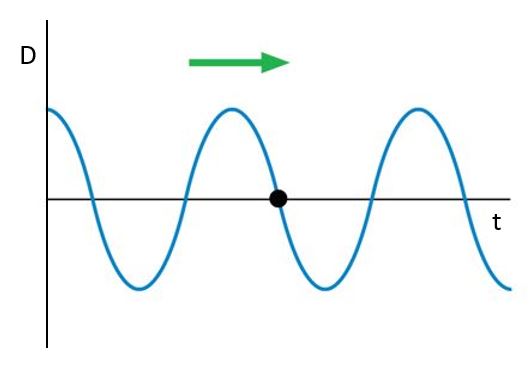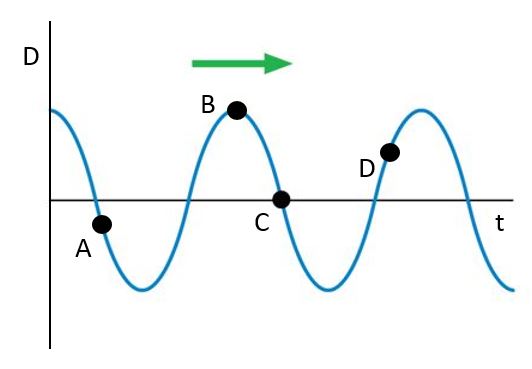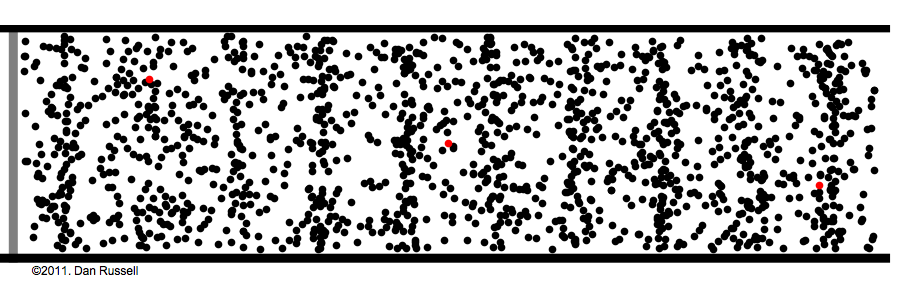Waves
- Traveling waves
- Sine waves
- Sound and light
- Power and intensity
- Doppler effect
A wave is a disturbance that propagates through space.
- Electromagnetic waves can travel through vacuum
- Mechanical waves propagate through a medium, such as air or water.
Mechanical waves can propagate in different ways. When the particles of the medium oscillate in the direction perpendicular to that of the wave propagation, the wave is called a transverse wave. A wave on a string is a good example of a transverse wave.
When the motion of the particles in the medium is along the direction of the wave propagation, the wave is said to be longitudinal. A sound wave is a good example of a longitudinal wave.
One of the most important concepts regarding mechanical waves is that the motion of the particles is only due to the disturbance. The particles are not transported along the wave, they oscillate about their equilibrium positions.
A wave can be thought of as the propagation of a signal. Waves carry energy as they propagate, and have a speed associated with the wave.

Consider the motion of a particle in a string, with a wave propagating to the right. Which direction is the particle moving?

Consider the motion of a particle in the string, with a wave propagating to the right. At which position is a particle moving the fastest?



Image source